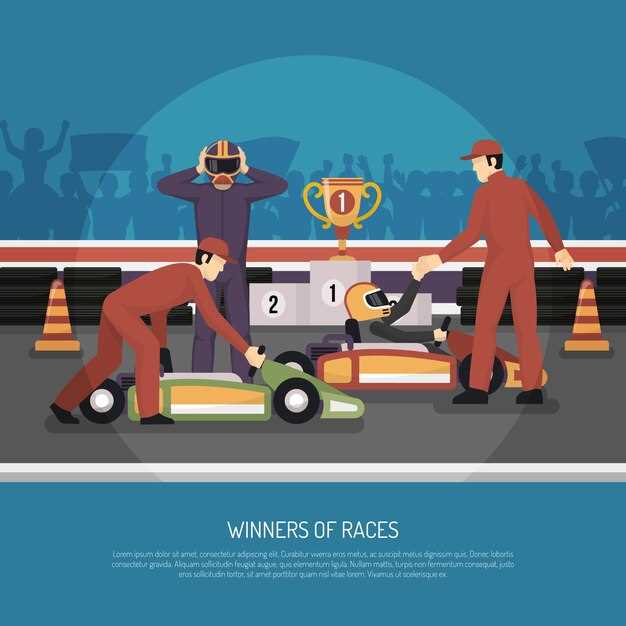
In the world of motorsports, the skills that separate professional race drivers from amateurs are honed through years of practice and a deep understanding of driving techniques. These elite athletes not only possess extraordinary talent but also employ a variety of strategic approaches to maximize their performance on the track. By analyzing key driving techniques, aspiring racers can uncover invaluable tips that can dramatically enhance their driving abilities.
Mastering the art of racing requires more than just speed; it demands precision, control, and the ability to anticipate various track conditions. Professional race drivers excel in areas such as cornering, braking, and acceleration, all of which are critical for achieving optimal lap times. With a focus on these essential skills, drivers can navigate complex racing scenarios and react swiftly to any challenges that arise, making split-second decisions that can lead to victory.
Moreover, understanding the nuances of vehicle dynamics is crucial for effective driving. Professional drivers continuously assess their car’s performance and adapt their techniques to exploit its strengths while minimizing weaknesses. By implementing expert tips, including proper weight distribution, throttle control, and tire management, drivers can harness the full potential of their machines. This comprehensive approach not only elevates individual performance but also enhances overall racing strategy, setting the stage for success on the track.
Mastering Cornering: Techniques for Optimal Traction

Cornering is one of the most critical aspects of racing, requiring a combination of precise skills and well-timed execution. For professional race drivers, mastering cornering can mean the difference between victory and defeat. Here are key tips to enhance your cornering technique and maximize traction.
First, understanding the racing line is essential. The racing line is the optimal path around a corner, which often involves late apexing to allow for higher speed exit. By positioning the car correctly throughout the turn, racers can maintain momentum and improve grip.
Next, focus on your braking technique. Effective braking is crucial before entering a bend. Practice threshold braking to maximize the deceleration while keeping the tires close to their limit of grip. This technique helps in transferring weight forward, increasing front-end traction, which is vital for turning into the corner.
Throttle modulation during the corner is another key skill. Instead of slamming the accelerator, progressively apply throttle as you reach the apex. This gradual increase reduces the likelihood of losing traction and helps keep the car balanced, allowing for better acceleration out of the turn.
Additionally, body positioning within the car can influence cornering performance. Maintain a stable posture, keeping your hands steady on the wheel and your body aligned with the direction of the turn. This stability provides better control and allows for quicker reactions, which are vital in dynamic racing environments.
Finally, continuous practice and observation of racing techniques can significantly refine your cornering skills. Analyzing high-level races and understanding how top drivers tackle corners will provide valuable insights, enabling you to adapt those strategies in your own driving.
By implementing these tips and consistently honing your skills, you will not only optimize traction during corners but also enhance your overall racing performance.
Precision Throttle Control: Accelerating Out of Turns
In professional racing, mastering precision throttle control is essential for optimizing performance when accelerating out of turns. This technique allows drivers to effectively balance speed and stability, ensuring they maintain control while maximizing acceleration. Here are key tips to enhance your driving through this skill.
First, focus on the timing of your throttle application. As you exit a turn, wait until the car is fully straightened before applying the throttle. This helps to avoid oversteer and ensures that the vehicle is stable. Applying the throttle too early can lead to loss of traction, resulting in slower lap times or even spin-outs.
Additionally, practice smooth transitions with the throttle. Sudden increases in throttle can upset the car’s balance, leading to unwanted weight shifts. Gradual application allows the tires to maintain grip and provides better control. Use your foot pressure to modulate acceleration, combining it with gentle steering corrections.
Furthermore, be aware of your car’s handling characteristics. Different vehicles respond uniquely to throttle inputs, so it is crucial to understand your race car’s limits. Spend time getting familiar with how your car behaves at various throttle levels during practice sessions. This knowledge will help you predict its behavior more accurately in competitive situations.
Lastly, don’t forget to incorporate trail braking into your approach. Performing light braking while entering a turn can help transfer weight to the front tires, enhancing grip during cornering. As you exit, smoothly transition from braking to accelerating, allowing for a seamless increase in speed.
By honing these aspects of precision throttle control, racers can significantly improve their corner exit speed, leading to faster lap times and enhanced overall performance on the track.
Braking Strategies: Maximizing Control and Speed Reduction

Effective braking is crucial for maintaining control and achieving optimal speed reduction in racing. Professional race drivers employ various techniques to ensure they can navigate corners swiftly while minimizing tire wear and maximizing stability.
One of the key tips is to practice threshold braking. This involves applying the brakes to the point just before wheel lock-up occurs, allowing for maximum deceleration without losing control. Achieving this skill requires an understanding of vehicle dynamics and tire grip limits.
Another essential strategy is to utilize trail braking. This technique involves maintaining some braking force while steering into a corner, which helps to shift weight to the front tires and increases grip. Mastery of trail braking can significantly enhance cornering speed and reduce lap times.
Consistency in braking points is vital for race drivers. Identifying reference points on the track allows for more predictable braking, fostering confidence and allowing for adjustments in speed and trajectory when necessary. Marking apexes and braking zones improves overall performance.
It is also important to adjust braking techniques based on changing track conditions. Wet or dirty surfaces require a lighter touch and more gradual braking input to maintain control. Recognizing how to adapt skills to different environments is essential for any competitive driver.
Finally, understanding brake balance is crucial. Drivers must learn to modulate the front and rear brake pressures to avoid instability. Proper balance leads to smoother deceleration and enhanced vehicle control when entering corners.
In summary, mastering braking strategies like threshold and trail braking, maintaining consistent reference points, adapting to conditions, and fine-tuning brake balance are integral skills for race drivers seeking to maximize control while reducing speed effectively.






